Identify the Differences Between Finches at the Feeders
Updated May 29, 2005
Also, when reading a range map, note the time of year. Many birds you see at your feeders in winter may not breed and nest in your area.
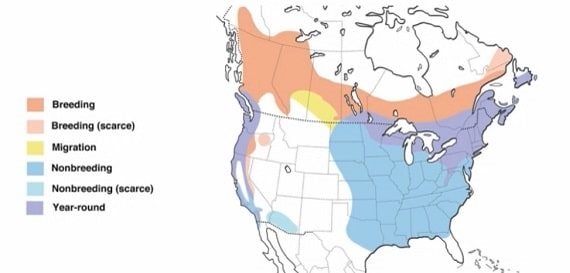
Purple Finch Range Map
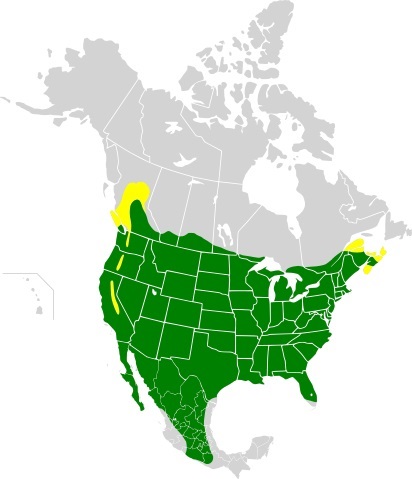
House Finch Range Map
The House Finch and Purple Finch are both small, colorful songbirds that belong to the family of Fringillidae.
Although they share some similarities, they also have some distinguishing features that make them unique.
In the article below, I'll discuss the differences in appearance, habitat, song, and other areas to help you tell them apart.
Appearance Male Finches
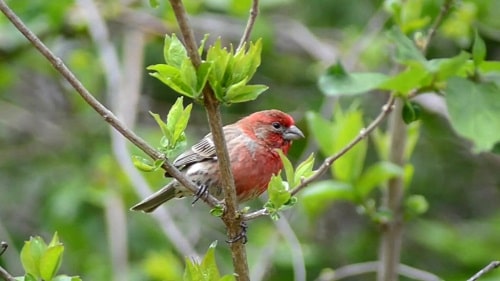
Male House Finches are slightly smaller than the male Purple Finches and are heavily streaked on their sides and breast. The crown and upper breast are red to orange-red.
The male Purple Finch has a raspberry-red head and upper breast, with a brown back and wings, and a white belly. There are no streaks on his belly.
Behind his eye, the male Purple finch has a faint dark bar with the same being true on his jaw.
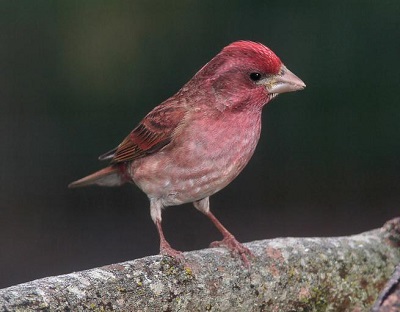
Appearance Females
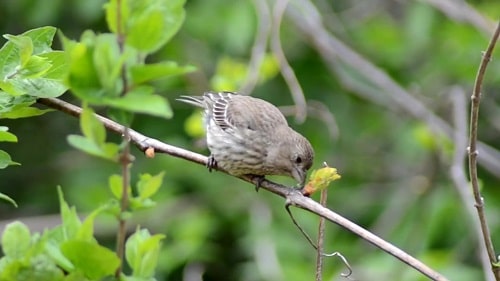
Female House Finches are brownish-gray with blurry streaks on their underparts and narrow stripes on their sides and breast.
There is no white on the female House Finches head. This is one of the easier ways to see the differences in females.
Female Purple Finches are brownish with wider dark stripes on the sides and breast.
Look closely at her eyes and you should see a light white streak above the eye. Below the eye also has some white around the jaw.
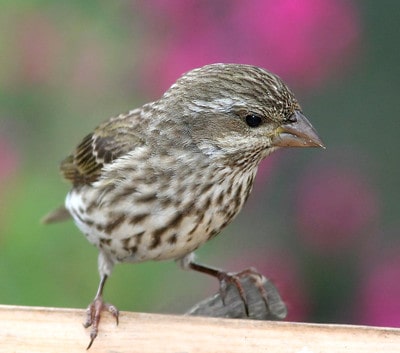
Habitat
The House Finch is commonly found in residential areas, farmlands, and open woodlands across North America. It is also known to inhabit deserts and grasslands in the western United States.
The Purple Finch is found in coniferous and mixed forests across North America. It prefers to nest in evergreen trees, but during migration or winter, it can be seen in a wider range of habitats.
Song
The House Finch has a distinctive, warbling song that is often described as a cheerful, bubbly, and rolling melody. Males are known to sing frequently, especially during the breeding season.
House Finch Song Call
The Purple Finch's song is a rich, musical whistle that often ends in a distinctive, downward-slurred note. It is known to sing more infrequently than the House Finch.
Purple Finch Call
Diet
The House Finch feeds on a variety of seeds, fruits, and insects. It is known to feed at backyard bird feeders, preferring black-oil sunflower seeds.
The Purple Finch also feeds on seeds and insects, but it has a strong preference for tree buds, especially those of maple and cherry trees. Also eats tree fruit.
Wings
There are some subtle differences in the wings of House Finches and Purple Finches, but they may not be easy to distinguish without close observation.
One difference is that the House Finch's wings are generally shorter and more rounded than the Purple Finch's wings.
The House Finch's primary feathers (the large feathers at the end of the wing) also have more distinct notches along the edges compared to the Purple Finch's primaries.
Another difference is that the House Finch's wing feathers have a slight curve or arc to them, while the Purple Finch's wing feathers are more straight-edged.
The shape of the House Finch's wing gives it a more compact and streamlined appearance in flight, while the Purple Finch's wing shape may contribute to a slightly more powerful and agile flight.
It's worth noting that wing morphology can be influenced by a variety of factors, including age, sex, and geographic location. Therefore, there may be some individual variation in wing shape within each species.
Tail Differences
Although there are tail differences, they are so subtle and difficult to distinguish without close observation.
The House Finch has a slightly notched tail, meaning that the feathers in the middle of the tail are shorter than those at the outer edges, creating a shallow V shape. This gives the tail a slightly forked appearance.
The Purple Finch, on the other hand, has a more deeply notched tail, with the central feathers significantly shorter than the outer feathers, creating a more pronounced V shape and appearing more forked than the House's.
Additionally, the Purple Finch's tail feathers are often described as more pointed, although this can also be difficult to discern without close observation.
It's important to note that tail shape can vary among individuals and can also change as feathers wear and molt.
I mention these things only because the differences are there and a purest might want to know why I left it out. However, I wouldn't rely on tails as a means of distinguishing between these two species.
So, there it is. The next time you see either of these birds at your feeders, you'll be equiped to easily identify which is which. Happy Birding.
Range maps from Wikipedia permission by Commons:GNU_Free_Documentation_License,_version_1.2










